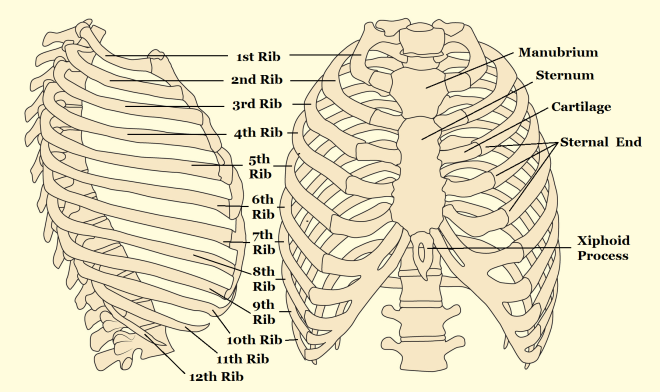This Quick Tips post is the sixth in the series on age estimation on skeletal remains, if you haven’t read the previous post click here, or to start at the beginning click here. The previous post provides an overview of the pubic symphyseal surface method of ageing, whereas the first post covers the basics.
The method was primarily developed by Iscan and Loth (1986) who studied the metamorphosis of the sternal end of the fourth rib. They found that the metamorphosis corresponds to the age but does vary by sex.
In their study they examined the “form, shape, texture and overall quality” of the sternal end which is found at the anterior (ventral) end of the shaft. This end is a roughened, porous, cupped oval surface which attaches to the cartilage attached to the sternum. From this they were able to define a series of phases that depict the metamorphism of the sternal rib end over time.

Anatomy of the rib cage. This method was primarily developed by Iscan and Loth (1986) who studied the metamorphosis of the sternal end of the fourth rib. They found that the metamorphosis corresponds to the age but does vary by sex.
References:
Iscan, M.Y., and Loth, S.R. 1986. Estimation of age and determination of sex from the sternal rib. In: K. J. Reichs (ed.) Forensic Osteology: Advances in the Identification of Human Remains. Springfield, Illinois. Pg 68-89.
White, T.D., Folkens, P.A. 2005. The Human Bone Manual. San Diego, CA: Academic Press. Pg 360-385.
If you’re new to the realm of archaeological, anthropological and forensic sciences (AAFS), or are a student needing sturdy and reliable references, or wondering “what archaeology or anthropology textbooks to buy?” Check out our new ‘Useful Literature’ page!
